development of a direct test method for dynamically assessing the liquefaction resistance of soils in situ
Bạn đang xem bản rút gọn của tài liệu. Xem và tải ngay bản đầy đủ của tài liệu tại đây (12.97 MB, 542 trang )
Copyright
by
Brady Ray Cox
2006
The Dissertation Committee for Brady Ray Cox Certifies that this is the approved
version of the following dissertation:
Development of a Direct Test Method for Dynamically Assessing the
Liquefaction Resistance of Soils In Situ
Committee:
Kenneth H. Stokoe II, Supervisor
Ellen M. Rathje
John L. Tassoulas
Clark R. Wilson
T. Leslie Youd
Development of a Direct Test Method for Dynamically Assessing the
Liquefaction Resistance of Soils In Situ
by
Brady Ray Cox, M.S.
Dissertation
Presented to the Faculty of the Graduate School of
The University of Texas at Austin
in Partial Fulfillment
of the Requirements
for the Degree of
Doctor of Philosophy
The University of Texas at Austin
May 2006
UMI Number: 3222596
3222596
2006
Copyright 2006 by
Cox, Brady Ray
UMI Microform
Copyright
All rights reserved. This microform edition is protected against
unauthorized copying under Title 17, United States Code.
ProQuest Information and Learning Company
300 North Zeeb Road
P.O. Box 1346
Ann Arbor, MI 48106-1346
All rights reserved.
by ProQuest Information and Learning Company.
Dedication
To my lovely wife Audrey and my two beautiful daughters Kayla and Savannah
To my steadfast parents Clayton and Jerri Lynn
To all my family
v
Acknowledgements
I express my deepest gratitude to my advisor, Dr. Kenneth H. Stokoe II. I
could not have asked to work with a more talented and enthusiastic individual.
He has involved me on many interesting and challenging projects that have
allowed me to travel, to meet people in the profession, and to gain knowledge and
expertise outside the bounds of my dissertation research. I will forever benefit
from these experiences. It has been an honor and a privilege to not only work for
a great professor, but also a great man.
I am grateful for the help and guidance provided to me by my advisory
committee members, Dr. Ellen Rathje, Dr. John L. Tassoulas, Dr. Clark R.
Wilson, and Dr. T. Leslie Youd. I have learned a great deal from each of these
individuals.
I acknowledge and give thanks to the other geotechnical engineering
faculty members at The University of Texas, Dr. Gilbert, Dr. Olson, Dr. Tonon,
Dr. Wright and Dr. Zornberg. They have made, and will continue to make, this
program one of the best in the country.
There have been many students and other individual who have helped me
during my time at The University of Texas. In particular, I give thanks to Min Jae
Jung for keeping me laughing on many long field excursions, to Cecil Hoffpauir
for his hard work and expertise in working with the vibroseis trucks, to Dr. Farn-
Yuh Menq and Dr. Brent Rosenblad for hands on training in many soil dynamics
related issues, to Dr. Wen-Jong Chang for teaching me about his liquefaction
vi
research, to Frank Wise for his tutelage on electronics and circuitry, to Jeffery
Lee, Asli Kurtulus and Yin-Cheng Lin for sharing an office and advice, to Wayne
Fontenot, Max Trevino and Gonzalo Zapata for helping my to blow off steam and
refine my ping-pong skills during lunch, and to Teresa Tice-Boggs, Chris Trevino
and Alicia Zapata for their administrative support.
I am most grateful to my dear wife, and eternal companion, Audrey. Her
strength and support in my life cannot be quantified. She is such a wonderful
mother to our two daughters, Kayla and Savannah. They have been
understanding and extremely patient with me during the writing of this
dissertation and my research related travels. I love them with all of my heart and
cannot imagine a life without them. I also give thanks to my parents, Clayton and
Jerri Lynn Cox. They set my feet on the path that has brought me to this point in
my life. I am grateful for the principles they instilled in me as a young man and
for their continued support, guidance and love for our family. I am also thankful
for my parents-in-law, Curtis and Catherine Steele. In addition to their support
and concern for us, their biannual trips to Austin have been especially enjoyable
for Audrey, the girls and me.
vii
Development of a Direct Test Method for Dynamically Assessing
the Liquefaction Resistance of Soils In Situ
Publication No._____________
Brady Ray Cox, Ph.D.
The University of Texas at Austin, 2006
Supervisor: Kenneth H. Stokoe, II
This dissertation details work conducted by researchers from the University
of Texas at Austin aimed toward the development and implementation of a new
in-situ liquefaction testing technique. This technique is an active method that
may be used to directly evaluate the liquefaction resistance of soils in place. The
test is based on the premise of dynamically loading a native soil deposit in a
manner similar to an earthquake while simultaneously measuring its response
with embedded instrumentation. Dynamic loading is performed via a large, truck-
mounted hydraulic shaker (vibroseis) that is used to excite the ground surface and
generate stress waves of varying amplitudes within an instrumented portion of the
soil mass. The embedded sensors consist of instrumentation to measure the
coupled response of soil particle motion and pore water pressure generation.
viii
The validity of this new test method has been demonstrated by conducting
field experiments at the Wildlife Liquefaction Array (WLA) in Imperial Valley,
California. The extensive site characterization, the documented occurrence of
earthquake-induced soil liquefaction at the site twice in the 1980’s, and the
likelihood for re-liquefaction of the site during subsequent earthquakes make the
WLA an ideal location for verifying the proposed in-situ dynamic liquefaction
test method.
In-situ liquefaction tests were carried out at three separate locations at the
WLA. The tests were successful at measuring: (1) excess pore water pressure
generation, and (2) nonlinear shear modulus behavior in the native silty-sand
deposits as a function of induced cyclic shear strain and number of loading cycles.
These results are compared to pore pressure generation curves and nonlinear shear
modulus curves previously developed for WLA soils from laboratory testing
methods. Variations in the dynamic soil response across the site are also
discussed and the importance of evaluating liquefaction from direct in-situ
measurements is emphasized. These accomplishments represent a large step
forward in the ability to accurately evaluate the susceptibility of a soil deposit to
earthquake-induced liquefaction.
ix
Table of Contents
List of Figures xiv
List of Tables xxxviii
Chapter 1 1
Introduction 1
1.1 Earthquake-Induced Soil Liquefaction 1
1.2 Research Significance 2
1.3 Scope of Research 4
1.4 Organization of Dissertation 6
Chapter 2 11
Soil Liquefaction Background 11
2.1 Introduction 11
2.2 Liquefaction – A Complicated Phenomenon 11
2.3 Liquefaction Evaluation Procedures 20
2.4 In-Situ Soil Liquefaction Measurements 34
2.5 Need For A Dynamic In-Situ Liquefaction Test 37
2.6 Summary 38
Chapter 3 40
In-Situ Dynamic Liquefaction Test 40
3.1 Introduction 40
x
3.2 First-Generation In-Situ Liquefaction Test 41
3.3 Second-Generation In-Situ Liquefaction Test 45
3.4 Summary 48
Chapter 4 50
In-Situ Liquefaction Test Instrumentation 50
4.1 Introduction 50
4.2 Liquefaction Sensor 50
4.3 Data Acquisition 80
4.4 Summary 86
Chapter 5 88
Generalized In-Situ Liquefaction Test Procedure 88
5.1 Introduction 88
5.2 Sensor Installation 88
5.3 Staged Dynamic Loading 101
5.4 Sensor Extraction 103
5.5 Summary 104
Chapter 6 106
In-Situ Liquefaction Test Data Analysis 106
6.1 Introduction 106
6.2 Recorded Raw Data 106
6.3 Shear Strain Evaluation 112
6.4 Pore Pressure Ratio Evaluation 134
xi
6.5 Nonlinear Shear Modulus Evaluation 139
6.6 Summary 147
Chapter 7 148
The Wildlife Liquefaction Array; Imperial Valley, California 148
7.1 Introduction 148
7.2 Imperial Valley, California 149
7.3 Wildlife Liquefaction Array (WLA) 149
7.4 The 1987 Elmore Ranch and Superstition Hills Earthquakes 170
7.5 WLA Re-Instrumented as a NEES Site 177
7.6 Generalized WLA Liquefiable Soil Layer Properties 183
7.7 In-Situ Liquefaction Tests at the Wildlife Site 192
7.8 Summary 192
Chapter 8 194
In-Situ Liquefaction Test Results: Test Location C, WLA 194
8.1 Introduction 194
8.2 Test C: Array Location and Pre-Dynamic Loading Information 194
8.3 Test C: Staged Dynamic Loading Series 1 211
8.4 Test C: Staged Dynamic Loading Series 2 252
8.5 General Comparison of Results for Series 1 and Series 2 294
8.6 Summary 297
xii
Chapter 9 299
In-Situ Liquefaction Test Results: Test Location B, WLA 299
9.1 Introduction 299
9.2 Test B: Array Location and Pre-Dynamic Loading Information 299
9.3 Test B: Staged Dynamic Loading Series 1 316
9.4 Test B: Staged Dynamic Loading Series 2 342
9.5 General Comparison of Results for Series 1 and Series 2 369
9.6 Summary 370
Chapter 10 373
In-Situ Liquefaction Test Results: Test Location A, WLA 373
10.1 Introduction 373
10.2 Test A: Array Location and Pre-Dynamic Loading Information 373
10.3 Test A: Staged Dynamic Loading Series 1 404
10.4 Test A: Staged Dynamic Loading Series 2 427
10.5 General Comparison of Results for Series 1 and Series 2 445
10.6 Summary 447
Chapter 11 450
Comparison of Pore Pressure Generation Results: Test Locations A, B and C;
WLA 450
11.1 Introduction 450
11.2 Comparison of In-Situ Pore Pressure Generation Results 450
11.3 General Site Comparison 460
xiii
11.4 Summary 469
Chapter 12 471
Summary, Conclusions, Recommendations and Future Work 471
12.1 Summary 471
12.2 Conclusions 474
12.3 Recommendations 479
12.4 Future Work 488
References 491
Vita 498
xiv
List of Figures
Figure 2-1 Liquefaction-induced differential settlement between a row of
buildings and a sidewalk in Adapazari following the 1999
Kocaeli, Turkey earthquake (Cox, 2001). 18
Figure 2-2 Liquefaction-induced bearing capacity failure of a 5-story
building in Adapazari following the 1999 Kocaeli, Turkey
earthquake (from www.eerc.berkeley.edu/turkey/adapazari). 19
Figure 2-3 Liquefaction-induced lateral spreading and settlement, coupled
with tectonic subsidence, carried Hotel Sapanca partially into
Lake Sapanca following the 1999 Kocaeli, Turkey earthquake
(from www.eerc.berkeley.edu/turkey/ adapazari) 20
Figure 2-4 Empirical relationship between cyclic resistance ratio and stress-
corrected shear wave velocity for M=7.5 earthquakes (from
Andrus and Stokoe, 2000) 25
Figure 2-5 Ratio of cyclic strength between partially and fully saturated
sand as a function of measured P-wave velocity (from Ishihara,
2001) 27
Figure 2-6 Pore pressure generation curve developed from strain-controlled
cyclic triaxial tests on various sands with different specimen
preparation techniques and confining pressures (modified from
Dobry et al., 1982) 28
Figure 3-1 Picture of the vibroseis truck used as a dynamic source in the
first-generation in-situ liquefaction tests (from Stokoe et al.,
2004) 42
Figure 3-2 Schematic layout of vibroseis truck location, reconstituted soil
test pit, and associated instrumentation used in the first-
generation in-situ liquefaction test (from Chang, 2002). 42
Figure 3-3 Liquefaction sensor used in the first-generation in-situ
liquefaction test (from Chang, 2002). 43
Figure 3-4 Shearing strain and excess pore water pressure time histories
obtained from a first-generation in-situ liquefaction test (from
Chang, 2002). 44
xv
Figure 3-5 Pore pressure generation curves for different numbers of loading
cycles evaluated from a first-generation in-situ liquefaction test
series (from Chang, 2002) 45
Figure 3-6 Simplified schematic of first- and second-generation in-situ
liquefaction testing configurations (from Stokoe et al., 2004) 47
Figure 3.7 Picture of T-Rex, the new triaxial vibroseis truck used as a
dynamic source for second-generation liquefaction tests (from
Stokoe et al., 2004) 48
Figure 4-1 Picture of an in-situ liquefaction sensor and its associated cables 52
Figure 4-2 Schematic detailing the dimensions and components of the in-
situ liquefaction sensor 52
Figure 4-3 Picture of a triaxial (3D) MEMS accelerometer used as the
vibration-sensing component of the in-situ liquefaction sensors
(from www. silicondesigns.com). 55
Figure 4-4 Picture of the compound sine plate used to calibrate the 3D-
MEMS accelerometers for tilt. 57
Figure 4-5 Tilt calibration results for a 3D-MEMS accelerometer rotated
about its x-axis. 59
Figure 4-6 Tilt calibration results for a 3D-MEMS accelerometer rotated
about its y-axis. 59
Figure 4-7 Picture of the modal shaker used to dynamically calibrate the
3D-MEMS accelerometers installed in each in-situ liquefaction
sensor 62
Figure 4-8 Dynamic amplitude calibration results for a single component of
a 3D-MEMS accelerometer displayed on: a) a linear-frequency
scale, and b) a log-frequency scale 64
Figure 4-9 Dynamic phase calibration results between two y-components of
two 3D-MEMS accelerometers displayed on: a) a linear-
frequency scale, and b) a log-frequency scale 67
xvi
Figure 4-10 Picture of an Entran model EPX-V02-25P miniature pore water
pressure transducer (PPT) used in each in-situ liquefaction
sensor 71
Figure 4-11 Picture of the standpipe used for calibration of the pore pressure
transducer (PPT) in each liquefaction sensor during field testing. 72
Figure 4-12 Linear calibration results for a typical pore pressure transducer
(PPT) used during dynamic in-situ liquefaction tests. 73
Figure 4-13 Picture of the Druck PDCR 35/D pressure transducer in its
acrylic case. 77
Figure 4-14 Picture of a liquefaction sensor prior to pore pressure transducer
cavity saturation and filter installation. 79
Figure 4-15 Picture of a saturated liquefaction sensor with its protective
rubber membrane 79
Figure 4-16 Picture of the connector box used to rout individual conductors
from the liquefaction sensor cables to their appropriate inputs
and outputs. 81
Figure 4-17 Picture of the system used to provide power to the in-situ
liquefaction sensors. 84
Figure 4-18 Picture of the data acquisition system used for dynamic in-situ
liquefaction tests 87
Figure 5-1 Picture of an in-situ liquefaction sensor and its associated cables 89
Figure 5-2 Picture of the hydraulic cylinder on the rear bumper of T-Rex
used with push rods to install the liquefaction sensors in the field. . 90
Figure 5-3 Picture of the pushing and pulling connections that couple the
hydraulic cylinder on the rear bumper of T-Rex to the push rods. 91
Figure 5-4 Picture of the two pilot cones used to help install the liquefaction
sensors in the field 93
Figure 5-5 Picture of the rubber gasket used to seal the hollow section of the
steel push rods. 94
xvii
Figure 5-6 Picture of a liquefaction sensor and the pilot that enables it to be
lowered to the ground water level. 95
Figure 5-7 Picture of the installed liquefaction sensor array and crosshole
source rods 97
Figure 5-8 Cross-sectional schematic of the trapezoidal sensor array used
for in-situ liquefaction tests 97
Figure 5-9 Picture of the backfilled liquefaction sensor trench. 100
Figure 5-10 Picture of the base plate of T-Rex centered over the top of the
liquefaction sensor array. 100
Figure 5-11 Calibration results for the base plate hold-down force of T-Rex 102
Figure 5-12 Schematic showing the location and mode of operation of T-Rex
during staged dynamic loading of the instrumented liquefiable
layer 102
Figure 5-13 Picture detailing the simultaneous withdrawal of the push rods
and wire rope during liquefaction sensor extraction. 105
Figure 6-1 Raw output signals from the x-, y-, and z-components of a 3D-
MEMS accelerometer during dynamic in-situ liquefaction
testing. 108
Figure 6-2 Raw output signal from a single component of a 3D-MEMS
accelerometer during dynamic in-situ liquefaction testing;
displayed in the: a) time domain, and b) frequency domain. 110
Figure 6-3 Velocity signal obtained from integrating a single component of
a 3D-MEMS accelerometer recorded during dynamic in-situ
liquefaction testing; displayed in the: a) time domain, and b)
frequency domain 113
Figure 6-4 Displacement signal obtained from double integration of a single
component of a 3D-MEMS accelerometer recorded during
dynamic in-situ liquefaction testing; displayed in the: a) time
domain, and b) frequency domain 114
xviii
Figure 6-5 Representation of 4-node element in (a) the global coordinate
system and (b) the natural coordinate system (from Chang,
2002) 117
Figure 6-6 Schematic detailing the liquefaction sensor array, the direction of
dynamic excitation, the primary components of particle
displacement, and the equation used to calculate the strain vector
at the center of the element using a 4-node, finite element
formulation. 122
Figure 6-7 Example of a shear strain time history calculated at the center of
the in-situ liquefaction sensor array using a 4-node, finite
element strain formulation. 122
Figure 6-8 Comparisons between in-plane shear strains (γ
yz
) calculated
using the 4-node displacement-based (DB) method and the 2-
node DB method 125
Figure 6-9 In-plane shear strains (γ
yz
) predicted by the 2-node DB method,
as percentages of the shear strains calculated using the 4-node
DB method. 125
Figure 6-10 Comparisons between in-plane shear strains (γ
yz
) calculated
using the 4-node displacement-based (DB) method, the 4-node
DB method with only y-component particle displacements, and
the 2-node DB method. 127
Figure 6-11 Comparisons between in-plane shear strains (γ
yz
) calculated
using the 4-node displacement-based (DB) method and the out-
of-plane shear strains (γ
xz
) calculated using the 2-node DB
method 130
Figure 6-12 Out-of-plane shear strains (γ
xz
) predicted by the 2-node DB
method, as percentages of the shear strains calculated using the
4-node DB method. 130
Figure 6-13 Comparisons between in-plane shear strains (γ
yz
) calculated
using the 4-node displacement-based (DB) method, the 4-node
DB method with only y-component particle displacements, and
the wave based (WB) method. 133
xix
Figure 6-14 In-plane shear strains (γ
yz
) predicted by the wave-based (WB)
method, and the 4-node displacement-based (DB) method with
only y-component particle displacements, as percentages of the
shear strains calculated using the traditional 4-node DB method. . 133
Figure 6-15 Examples of pore pressure time histories obtained during in-situ
liquefaction testing in which: a) induced shear strains were not
large enough to generate excess pore water pressure, and b)
induced shear strains were large enough to generate excess pore
water pressure 135
Figure 6-16 Example of an excess pore water pressure time history obtained
during in-situ liquefaction testing: a) prior to frequency-domain
filtering, and b) after frequency domain filtering to separate the
hydrodynamic and residual portions of the signal. 137
Figure 6-17 Mean modulus reduction curve for sands proposed by Seed et al.,
(1986). 141
Figure 6-18 Schematic detailing the liquefaction sensor array and the
components of particle motion used to calculate the strain
dependent shear wave velocity of the instrumented soil mass 142
Figure 6-19 Cycle-by-cycle shear wave velocities from an in-situ liquefaction
test with relatively moderate induced shear strains (γ ~ 0.009%) 144
Figure 6-20 Cycle-by-cycle shear wave velocities from an in-situ liquefaction
test with relatively large induced shear strains (γ ~ 0.045%) 144
Figure 6-21 Comparison between the amplitudes and phase of two separate
receivers located at the same depth on either side of the base
plate centerline during an in-situ dynamic liquefaction test. 146
Figure 7-1 Map showing the location of the Wildlife Liquefaction Array
(WLA) and the epicenters for the 1981 Westmorland earthquake
(M
w
= 5.9), the 1987 Elmore Ranch earthquake (M
w
= 6.2), and
the 1987 Superstition Hills (M
w
= 6.6) earthquake (after Holzer
et al., 1989) 151
Figure 7-2 Plan view and cross section of the Wildlife Liquefaction Array
(WLA) showing sediment stratigraphy and locations of
accelerometers and piezometers installed by USGS personnel
(from Bennett et al., 1984): a) plan view, and b) cross section 152
xx
Figure 7-3 Plan view of the Wildlife Liquefaction Array (WLA) showing
the locations of instrumentation and tests performed by various
researchers (from Bennett et al., 1984). 155
Figure 7-4 Average sediment properties and test parameters for the soil
layers at the Wildlife Liquefaction Array (WLA) (after Bennett
et al., 1984) 155
Figure 7-5 Shear wave velocity profiles obtained from SASW and crosshole
tests performed at the Wildlife Liquefaction Array (from
Bierschwale and Stokoe, 1984) 159
Figure 7-6 Range in modulus reduction curves for upper liquefiable layer
(A) Wildlife Site specimens tested in the resonant column device
(from Haag and Stokoe, 1985). 164
Figure 7-7 Range in modulus reduction curves for lower liquefiable layer
(B) Wildlife Site specimens tested in the resonant column device
(from Haag and Stokoe, 1985). 164
Figure 7-8 Comparison between the range in modulus reduction curves for
upper (A) and lower (B) liquefiable layer Wildlife Site
specimens tested in the resonant column device by Haag and
Stokoe (1985). 165
Figure 7-9 Comparison between the range in modulus reduction curves for
liquefiable Wildlife Site soils and clean sands 165
Figure 7-10 Dobry’s pore pressure generation model (Vucetic and Dobry,
1986) for the Wildlife Site liquefiable soil layer 169
Figure 7-11 Acceleration (a) and pore pressure time histories (b) recorded at
the Wildlife Liquefaction Array during the 1987 Superstition
Hills earthquake (M
w
= 6.6) (from Holzer et al., 1989). 172
Figure 7-12 Wildlife Site shear moduli values estimated from the 1987
Elmore Ranch (ER) and Superstition Hills (SH) earthquakes
using shear stress-strain loops obtained from surface and
downhole accelerometer records (from Zeghal and Elgamal,
1994) 174
xxi
Figure 7-13 Comparison between the range in modulus reduction curves
obtained from resonant column tests performed on liquefiable
soils from the Wildlife Site with in-situ estimates obtained from
the 1987 Elmore Ranch and Superstition Hills earthquakes. 176
Figure 7-14 Relative locations of the 1982 (old) and 2004 (new) Wildlife
Liquefaction Array (WLA) instrumentation sites (after
http://nees. ucsb.edu) 178
Figure 7-15 CPT soundings from the: a) old Wildlife Liquefaction Array
(WLA) site, and b) new WLA site including the approximate
locations of the upper and lower liquefiable soil layers proposed
by Bennett et al. (1984) (raw CPT data from
) 179
Figure 7-16 Locations of the in-situ soil characterization tests performed, and
instrumentation installed, at the 2004 (new) Wildlife
Liquefaction Array (WLA) instrumentation site (after http://nees.
ucsb.edu). 181
Figure 7-17 Tip resistance (qc), friction ratio, and apparent fines content
values obtained from CPT 43 () at the
Wildlife Site. 189
Figure 7-18 Deep shear wave velocity profiles obtained from SASW testing
and P-S logger measurements () at the
Wildlife Site. 191
Figure 7-19 Approximate locations of the three in-situ dynamic liquefaction
tests that were carried out at the Wildlife Liquefaction Array
(WLA) (after http://nees. ucsb.edu). 193
Figure 8-1 Approximate location of the in-situ liquefaction sensor array
installed at Test Location C, Wildlife Liquefaction Array (WLA)
(after http://nees. ucsb.edu). 195
Figure 8-2 Picture of an installed liquefaction sensor array as seen from the
ground surface. 196
Figure 8-3 Cross-sectional schematic of an embedded liquefaction sensor
array 196
xxii
Figure 8-4 Position of the liquefaction sensor array at Test Location C,
shown with respect to the general soil layering at the Wildlife
Site as proposed by Bennett et al. (1984) 201
Figure 8-5 Depth range of the liquefaction sensor array at Test Location C,
shown with respect to the tip resistance (q
c
) and friction ratio (F
r
)
values obtained from CPT 47 and the upper and lower liquefiable
soil layers proposed by Bennett et al. (1984) (raw CPT data from
) 203
Figure 8-6 Cross-sectional schematic of the liquefaction sensor array, the
crosshole source rods, and the base plate of T-Rex. 207
Figure 8-7 Crosshole waveforms recorded by the: a) horizontal, in-line
components (P
h
-waves identified on), and b) vertical components
(S
hv
-waves identified on) of sensors No. 2 (near) and No. 1 (far)
at Test Location C. 208
Figure 8-8 Illustration of how cyclic shear strains are averaged over various
numbers of loading cycles 214
Figure 8-9 Force applied at the ground surface by T-Rex, shear strain
induced at the center of the instrumented soil mass, and pore
pressure ratios generated at each sensor location during Series 1,
loading stage No. 1; Test Location C, Wildlife Liquefaction
Array 216
Figure 8-10 Force applied at the ground surface by T-Rex, shear strain
induced at the center of the instrumented soil mass, and pore
pressure ratios generated at each sensor location during Series 1,
loading stage No. 2; Test Location C, Wildlife Liquefaction
Array 219
Figure 8-11 Force applied at the ground surface by T-Rex, shear strain
induced at the center of the instrumented soil mass, and pore
pressure ratios generated at each sensor location during Series 1,
loading stage No. 3; Test Location C, Wildlife Liquefaction
Array 220
xxiii
Figure 8-12 Force applied at the ground surface by T-Rex, shear strain
induced at the center of the instrumented soil mass, and pore
pressure ratios generated at each sensor location during Series 1,
loading stage No. 4; Test Location C, Wildlife Liquefaction
Array 222
Figure 8-13 Force applied at the ground surface by T-Rex, shear strain
induced at the center of the instrumented soil mass, and pore
pressure ratios generated at each sensor location during Series 1,
loading stage No. 5; Test Location C, Wildlife Liquefaction
Array 224
Figure 8-14 Force applied at the ground surface by T-Rex, shear strain
induced at the center of the instrumented soil mass, and pore
pressure ratios generated at each sensor location during Series 1,
loading stage No. 6; Test Location C, Wildlife Liquefaction
Array 225
Figure 8-15 Force applied at the ground surface by T-Rex, shear strain
induced at the center of the instrumented soil mass, and pore
pressure ratios generated at each sensor location during Series 1,
loading stage No. 7; Test Location C, Wildlife Liquefaction
Array 227
Figure 8-16 Pore pressure ratios generated at each sensor location during
Series 1, loading stage No. 7; Test Location C, Wildlife
Liquefaction Array. 228
Figure 8-17 Force applied at the ground surface by T-Rex, shear strain
induced at the center of the instrumented soil mass, and pore
pressure ratios generated at each sensor location during Series 1,
loading stage No. 8; Test Location C, Wildlife Liquefaction
Array 230
Figure 8-18 Pore pressure ratios generated at each sensor location during
Series 1, loading stage No. 8; Test Location C, WLA. 232
Figure 8-19 Pore pressure generation curves obtained from in-situ
liquefaction tests conducted during staged dynamic loading
Series 1 at Test Location C, Wildlife Liquefaction Array. 233
xxiv
Figure 8-20 Comparison between Dobry’s pore pressure generation model
(Vucetic and Dobry, 1986) and pore pressure generation curves
obtained from in-situ liquefaction tests conducted during staged
dynamic loading Series 1 at Test Location C, Wildlife
Liquefaction Array. 234
Figure 8-21 Full pore pressure ratio scale comparison between Dobry’s pore
pressure generation model (Vucetic and Dobry, 1986) and pore
pressure generation curves obtained from in-situ liquefaction
tests conducted during staged dynamic loading Series 1 at Test
Location C, Wildlife Liquefaction Array 236
Figure 8-22 Cycle-by-cycle shear wave velocities from loading stage No. 1 (γ
~ 0.0010%) of staged dynamic loading Series 1 at Test Location
C, Wildlife Liquefaction Array. 238
Figure 8-23 Cycle-by-cycle shear wave velocities from loading stage No. 7 (γ
~ 0.0234%) of staged dynamic loading Series 1 at Test Location
C, Wildlife Liquefaction Array. 238
Figure 8-24 Cycle-by-cycle shear wave velocities from loading stage No. 8 (γ
~ 0.0451%) of staged dynamic loading Series 1 at Test Location
C, Wildlife Liquefaction Array. 240
Figure 8-25 Shear modulus values (G) calculated from the data collected
during staged dynamic loading Series 1 at Test Location C,
Wildlife Liquefaction Array 243
Figure 8-26 Normalized shear modulus (G/G
max
) – log γ relationship
calculated from the data collected during staged dynamic loading
Series 1 at Test Location C, Wildlife Liquefaction Array. 244
Figure 8-27 Normalized shear modulus values (G/G
max
) resulting from the
combined effects of modulus nonlinearity and modulus
degradation due to excess pore water pressure generation during
loading stage No. 8 of Series 1 at Test Location C, Wildlife
Liquefaction Array. 246
Figure 8-28 Illustration of the process used to try to predict the 100-cycle
normalized shear modulus value obtained during loading stage
No.8 from the 10-cycle normalized shear modulus value obtained
during loading stage No. 8. 247
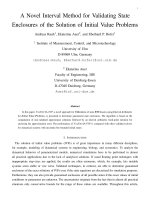

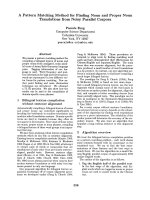

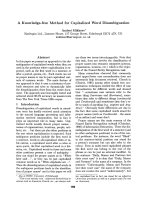
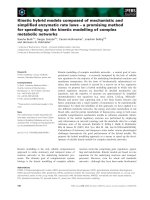
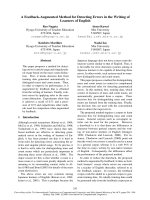
![Standard Test Method for Compressive Strength of Hydraulic Cement Mortars (Using 2-in. or [50-mm] Cube Specimens)](https://media.store123doc.com/images/document/14/rc/yi/medium_yil1395845738.jpg)

